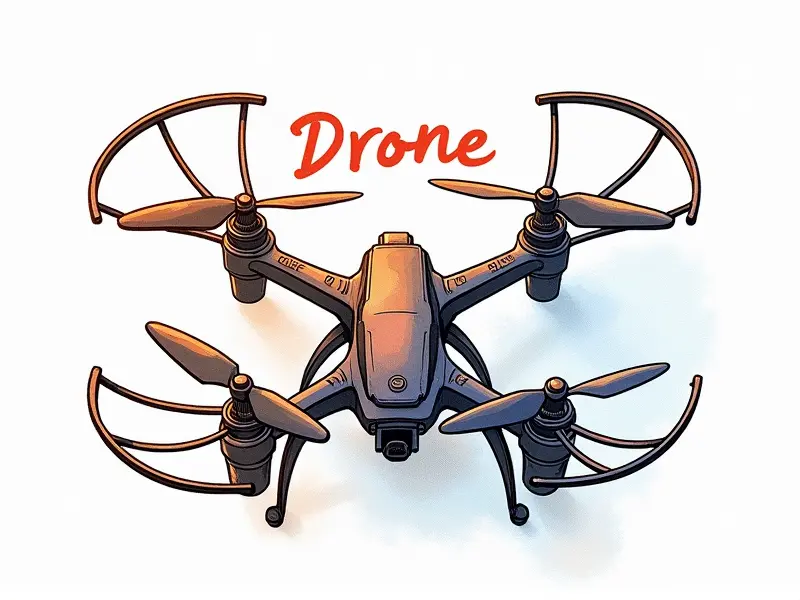Can drones fly autonomously?

The Rise of Self-Flying Drones in 2025
In recent years, the advancement in drone technology has been remarkable. The year 2025 marks a significant milestone as autonomous drones are becoming more prevalent and sophisticated. With the integration of artificial intelligence (AI) and machine learning algorithms, these unmanned aerial vehicles (UAVs) can now perform complex tasks with minimal human intervention.
The market for self-flying drones is expanding rapidly due to their versatility in various industries such as agriculture, construction, surveying, and delivery services. The ability of autonomous drones to operate without direct control from a pilot opens up new possibilities and challenges alike.
Autonomous Drone Tech: Advancements and Limitations
The technology behind autonomous drone flight has seen significant advancements in recent years. Key developments include:
- Sensor Integration: High-resolution cameras, LiDAR sensors, and other advanced imaging technologies enable drones to perceive their environment accurately.
- Navigation Systems: GPS and GNSS (Global Navigation Satellite System) provide precise positioning data for autonomous navigation.
- Machine Learning Algorithms: AI-driven algorithms allow drones to learn from past experiences, improving decision-making capabilities over time.
Despite these advancements, there are still limitations that need to be addressed. Some of the main challenges include:
- Complexity and Cost: Developing robust autonomous systems can be expensive and technically challenging.
- Regulatory Hurdles: Current regulations often restrict the use of fully autonomous drones, requiring human oversight in many scenarios.
- Safety Concerns: Ensuring that autonomous drones operate safely without causing harm to people or property is a critical issue.
Can Drones Operate Fully Autonomously Yet?
The question of whether drones can currently fly completely autonomously remains open-ended. While significant progress has been made, the technology still faces several hurdles:
- Limited Flight Range: Most autonomous drones have limited battery life and range, restricting their operational capabilities.
- Navigational Challenges: Complex environments with obstacles like buildings or trees can pose significant challenges for navigation systems.
- Data Processing Speed: Real-time data processing is crucial for effective autonomous flight, but current technology may struggle in high-pressure situations.
Exploring Autonomous Flight Capabilities in Drones
The capabilities of autonomous drones are expanding rapidly. Some of the key features include:
- Path Planning: Advanced algorithms enable drones to plan optimal flight paths based on real-time data.
- Object Detection and Avoidance: Sophisticated sensors allow drones to detect obstacles and navigate around them safely.
- Mission Automation: Automated mission execution ensures that tasks are completed efficiently without human intervention.
Are Drones Ready for Autonomous Flight?
The readiness of drones for autonomous flight depends on several factors, including technological maturity and regulatory compliance. While the technology is advancing rapidly, there are still areas where improvements are needed:
- Technological Maturity: The current state of drone technology needs further refinement to ensure reliability and safety.
- Regulatory Compliance: Adhering to existing regulations is crucial for the widespread adoption of autonomous drones.
Autonomous Drones: Navigating Without a Pilot
The concept of navigating without a pilot involves sophisticated navigation systems and intelligent algorithms. Key aspects include:
- Sensor Fusion: Combining data from multiple sensors to create a comprehensive understanding of the environment.
- Real-Time Decision Making: Algorithms that can process information quickly and make decisions on-the-fly are essential for autonomous flight.
The Future of Drone Autonomy
The future of drone autonomy is promising, with potential applications in numerous industries. Some key areas to watch include:
- Delivery Services: Autonomous drones could revolutionize the delivery industry by providing fast and efficient package transportation.
- Agricultural Monitoring: Drones equipped with advanced sensors can monitor crop health, soil conditions, and other critical factors in real-time.
How Close Are Autonomous Drones Today?
The current state of autonomous drones is evolving rapidly. While significant progress has been made, there are still gaps to bridge:
- Tech Innovations: Continued research and development will drive further improvements in drone technology.
- Regulatory Support: Clear guidelines and supportive policies from regulatory bodies can accelerate the adoption of autonomous drones.
Unlocking the Potential of Autonomous Drones
To unlock the full potential of autonomous drones, several steps need to be taken:
- Increase Investment in R&D: Funding for research and development is crucial for advancing drone technology.
- Promote Interdisciplinary Collaboration: Bringing together experts from various fields can foster innovation and drive progress.
Challenges in Autonomous Drone Technology
The challenges facing autonomous drone technology are multifaceted. Some of the key issues include:
- Data Privacy Concerns: Ensuring that data collected by drones is secure and protected from unauthorized access.
- Ethical Considerations: Addressing ethical questions related to autonomous decision-making in drone operations.
Is Autonomous Drone Flight Truly Possible?
The question of whether autonomous drone flight is truly possible hinges on ongoing technological advancements and regulatory frameworks. While significant progress has been made, achieving fully autonomous flight remains a goal rather than an immediate reality.
Conclusion
The rise of self-flying drones in 2025 marks an exciting era for the technology industry. With continuous innovation and supportive regulations, the potential for autonomous drone operations is immense. However, addressing current limitations and challenges will be crucial to realizing this vision fully.

